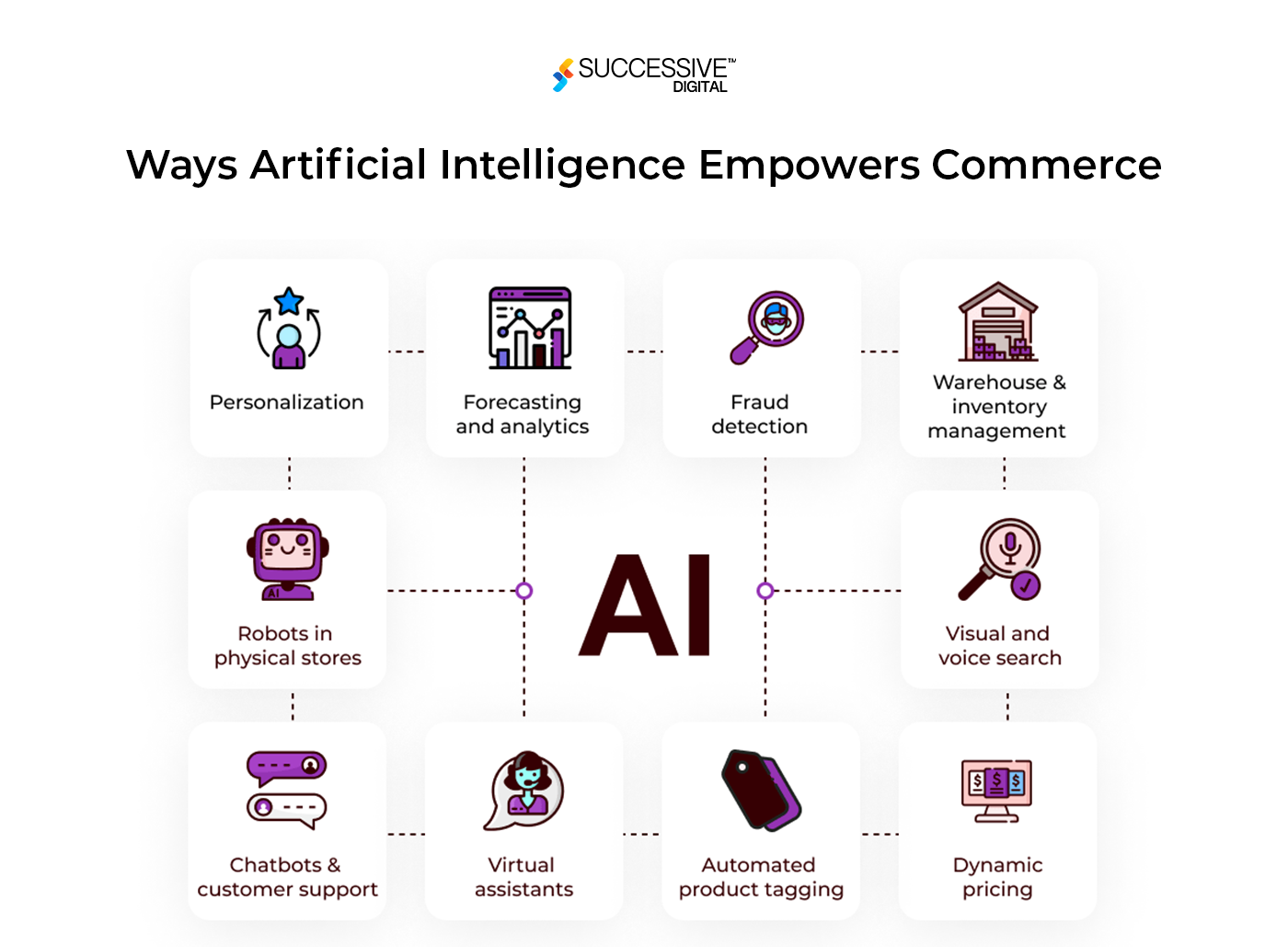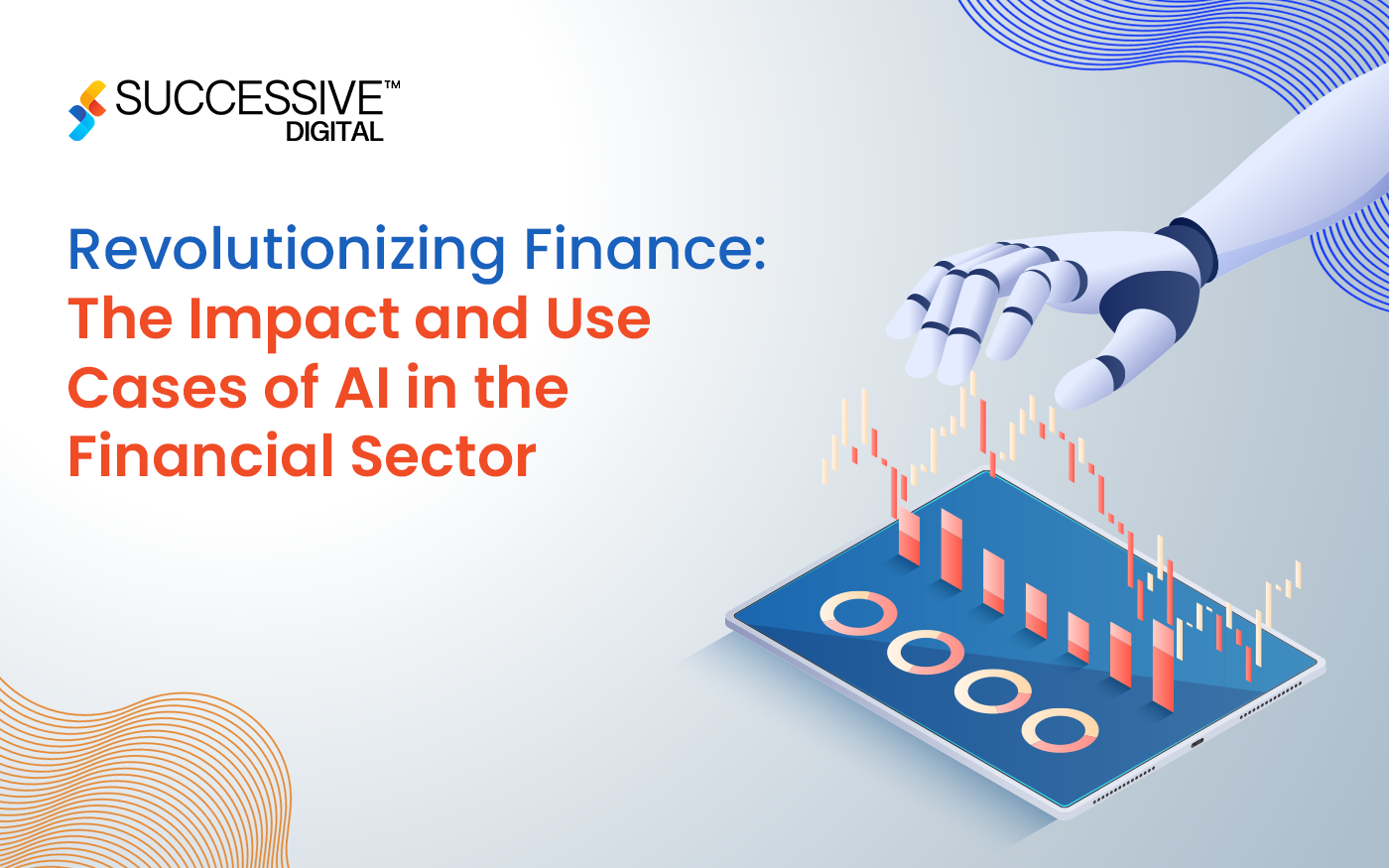The integration of Artificial Intelligence (AI) and Machine Learning (ML) in ecommerce marks the new era of a transformation characterized by innovation and operational performance. As businesses endeavour to fulfil the escalating demands of customers within an increasingly digital world, AI and ML become fundamental assets for revolutionizing the ecommerce ecosystem.
The pursuit of personalized purchasing experiences, operational streamlining, and informed decision-making has propelled AI and ML to the forefront of ecommerce strategies. Leveraging information analytics and predictive algorithms, brands can now anticipate customer preferences, forecast demand, and offer tailored suggestions that foster conversion and brand loyalty.
AI-powered chatbots, visual search technology, and dynamic pricing algorithms are not just trending innovations; they are the tools to enhance customer engagement on ecommerce platforms. These tools provide seamless experiences that bridge the gap between digital and physical retail environments, ultimately improving customer satisfaction. This blog explores the multifaceted ways in which AI and ML are reshaping the global ecommerce enterprise space, supported by current technical insights and real-world examples.

-
Personalized Shopping Experiences
The emergence of personalized shopping experiences indicates a significant evolution within the ecommerce enterprise, spurred by the aggregate of AI and machine learning in e-commerce. This transformative paradigm transcends conventional strategies, allowing brands to establish deeper connections with their user base through customized online interactions.
Utilizing AI and ML algorithms, many information factors, from past purchases and browsing histories to demographic profiles and engagements, are meticulously analyzed. This extensive analysis facilitates the creation of finely tuned recommendations for customers to make better purchase decisions. Leveraging this technology allows ecommerce structures to curate bespoke product alternatives, extend targeted promotions, and provide personalized shopping guidance that resonates with every consumer. The result is an extraordinarily enticing and intuitive shopping experience that complements customer satisfaction, drives conversion rates, and fosters long-term brand loyalty.
Example: Amazon’s recommendation engine is a prime example of AI-driven personalization in e-commerce. By analyzing personal conduct and buying history, Amazon shows that customers will likely be curious about products, leading to better conversion rates.
-
Predictive Analytics for Demand Forecasting
Predictive analytics for demand forecasting heralds a brand-new technology of precision in ecommerce operations, facilitated via the blend data facts analytics and advanced algorithms. By harnessing enormous datasets encompassing historical sales statistics, marketplace developments, and external factors, businesses can expect future demand with accuracy.
Cutting-edge predictive models, powered via machine learning in ecommerce techniques such as time series forecasting and ensemble methods, allow teams to make informed decisions in real-time. This proactive approach empowers companies to optimize stock management, mitigate stockouts, and capitalize on global opportunities, ultimately driving operational performance and enhancing user pride within the dynamic ecosystem of today’s ecommerce.
Example: Walmart uses AI-driven predictive analytics to forecast demand for multiple products throughout its worldwide network of stores. By analyzing historical sales, weather patterns, and social media interactions, Walmart optimizes inventory levels, lessen stockouts, and improve operational performance.
-
Chatbots for Customer Support
Chatbots for customer service exemplify the evolution of customer experience in the digital age, leveraging artificial intelligence in ecommerce to provide immediate assistance around the clock. These AI-driven virtual assistants use Natural Language Processing (NLP) and sentiment analysis to realize and respond to consumer queries in real time, enhancing the overall buying experience.
By seamlessly integrating chatbots with ecommerce platforms, they offer personalized suggestions, manage inquiries, and ease user challenges while purchasing. Constantly learning from interactions, these chatbots evolve to provide more accurate and relevant responses, ensuring well-timed assistance, better user engagement, and reinforces brand loyalty.
Example: Shopify’s Kit is an AI-powered virtual assistant that allows ecommerce merchants to manage numerous aspects of their enterprise, including advertising, customer support, and inventory control. Kit uses NLP algorithms to recognize merchants’ requests and presents personalized guidelines and insights.
-
Visual Search and Image Recognition
Visual search and image recognition technology are revolutionizing how purchasers discover merchandise online. By harnessing the potential of AI and machine learning in ecommerce, these progressive tools allow users to look for merchandise using voice or images instead of textual content. Sophisticated image recognition algorithms analyze visible cues, including colorations, styles, and shapes, to identify similar merchandise in the catalog.
This intuitive and consumer-friendly approach enhances purchasing experience by lowering search time and presenting more correct outcomes. From style to domestic decor, visual capabilities empower customers to search precisely what they seek with only a simple photograph, driving engagement and conversion rates for ecommerce businesses.
-
Dynamic Pricing Optimization
Dynamic pricing optimization is a strategic method empowered via AI and ML algorithms to alter product prices in real-time based on different factors, including season demand, competitor pricing, and market tendencies. Businesses can dynamically adapt pricing strategies by leveraging vast datasets and predictive analytics to maximize sales and profitability.
These superior algorithms continuously research past pricing decisions and their results, refining their models to reap the foremost strategy. From airways to ecommerce platforms, dynamic pricing optimization allows brands to remain aggressive, seize market opportunities, and grow customer satisfaction by offering fair and attractive pricing customized to dynamic conditions.
Example: Airlines and hotel booking platforms use AI-driven dynamic pricing to alter ticket and room expenses primarily based on demand, time of reservation, and competitor pricing. This enables them to maximize sales and profitability while offering aggressive costs to customers in real time.
Conclusion
As AI and ML in ecommerce continue to increase, the capability for further disruption and enhancement in its operations is infinite. By adopting intelligent solutions, brands can unlock new possibilities for personalized consumer experience, streamlined operations, and data-driven decision-making. As businesses embark on the journey of digital evolution, ecommerce companies must harness the power of AI and ML to stay ahead of the curve, driving performance and redefining the future of retail trade.










![AI Voice Assistant App Development Like Alexa [Complete Guide]](https://v4successive.successive.work/wp-content/uploads/2024/01/AI-Voice-Assistant-App-Development-Like-Alexa.png)

